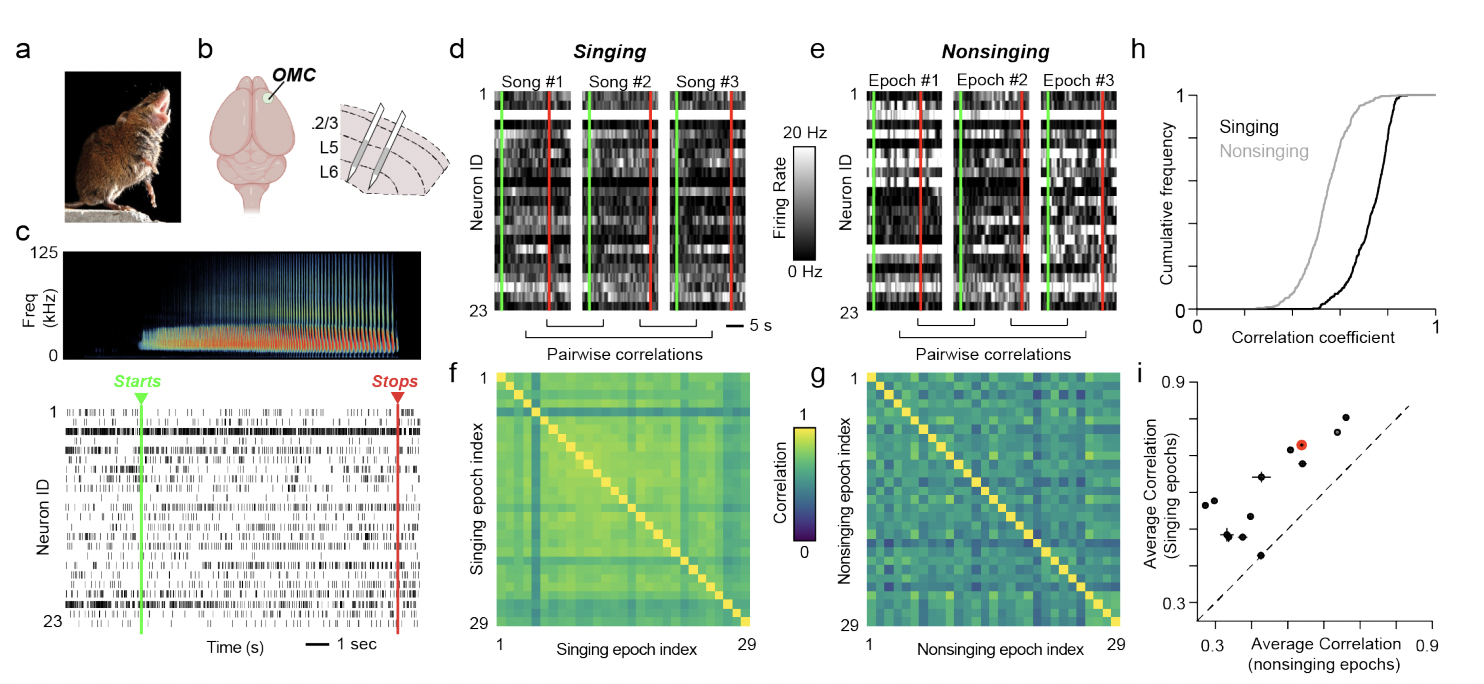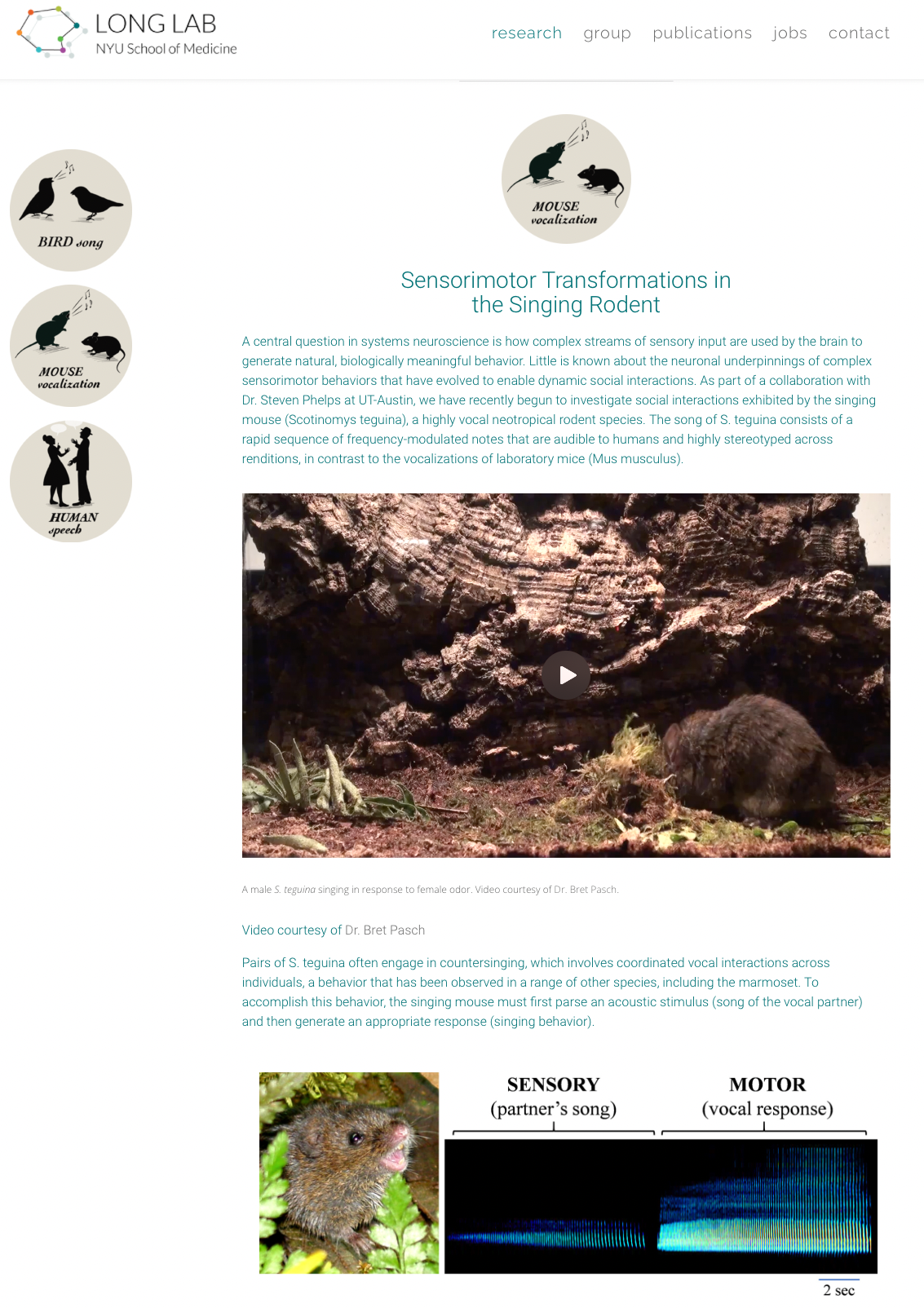A new preprint has recently been published in BioRxiv using DBC's high-density silicon probes. The study is entitled "Neural dynamics in the rodent motor cortex enables flexible control of vocal timing" by Arkarup Banerjee, Feng Chen, Shaul Druckmann and Michael A. Long.
ABSTRACT: Neocortical activity is thought to mediate voluntary control over vocal production, but the underlying neural mechanisms remain unclear. In a highly vocal rodent, the Alston’s singing mouse, we investigate neural dynamics in the orofacial motor cortex (OMC), a structure critical for vocal behavior. We first describe neural activity that is modulated by component notes (approx. 100 ms), likely representing sensory feedback. At longer timescales, however, OMC neurons exhibit diverse and often persistent premotor firing patterns that stretch or compress with song duration (approx. 10 s). Using computational modeling, we demonstrate that such temporal scaling, acting via downstream motor production circuits, can enable vocal flexibility. These results provide a framework for studying hierarchical control circuits, a common design principle across many natural and artificial systems.
Check it out here:
https://www.biorxiv.org/content/10.1101/2023.01.23.525252v1.full.pdf

Learn more about the Long Lab and their innovative studies here: https://longlab.med.nyu.edu/research/

